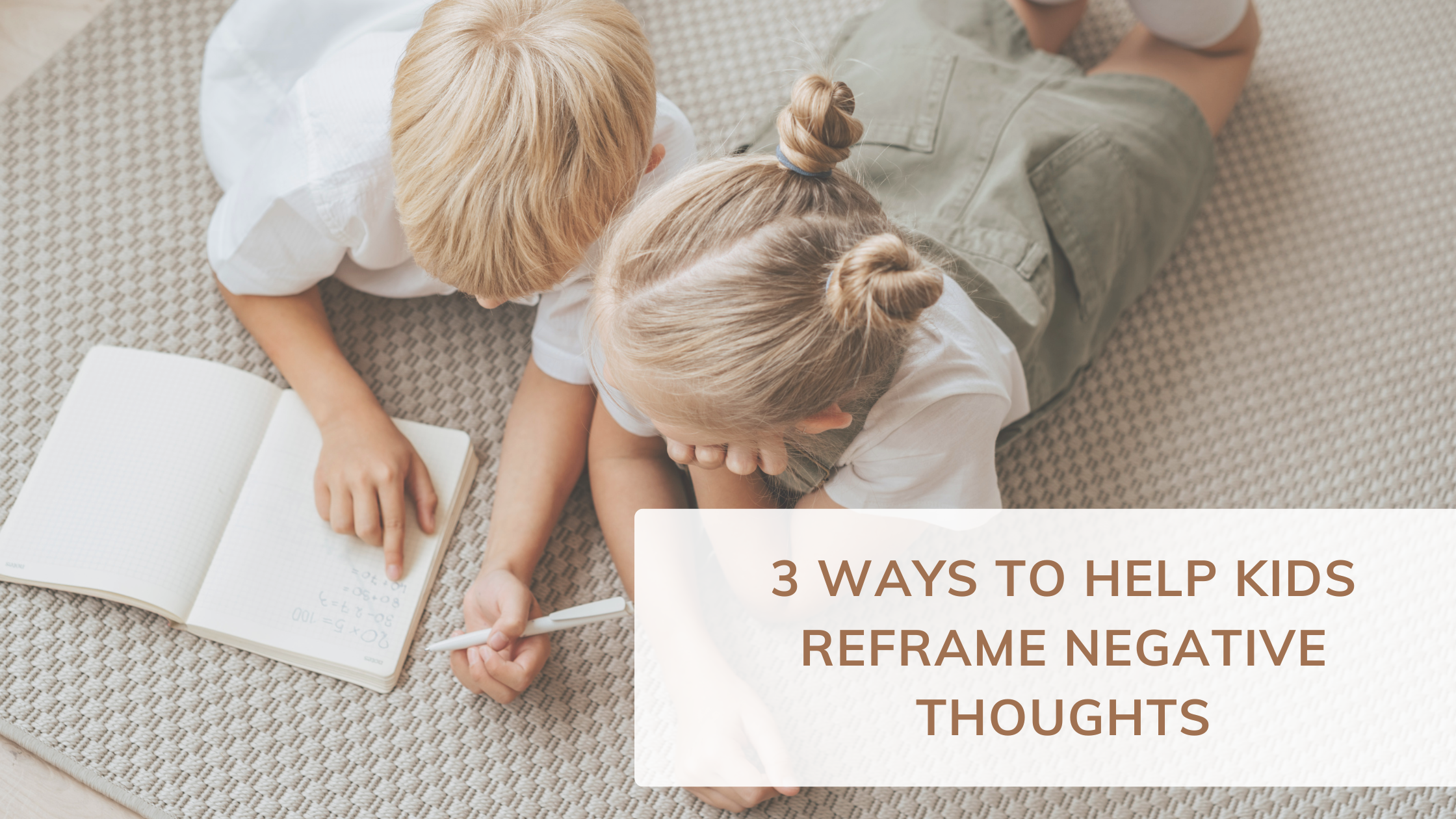3 Ways to Help Kids Reframe Negative Thoughts
Self-talk can be described as the little voice inside a child’s mind. The one that helps them make sense of their day and how they feel about themselves. Sometimes it’s gentle and encouraging, and other times it can sound a bit unkind. The good news is kids can learn to turn that inner voice into a helpful, positive one.
Negative self-talk can come from many places. For kids, it often begins with the messages they hear growing up – words like “you’re too sensitive, “stop crying, it’s not a big deal,” “be good”, or “you’re fine.” Over time, those moments can shape how a child speaks to themselves on the inside.
So, how can we reframe those negative thoughts? Here are 3 easy, simple steps that you can start using today.
1) Name the feeling
We can connect “name that feeling” with mindfulness, by having the child pause and notice. For example, when a child has a negative thought (such as, “I’m not good at this.”) invite them to pause and take a slow breath. You could say, “let’s take a quiet breath and notice what’s happening right now.” This simple pause helps them step out of the thought and into awareness – the first step of mindfulness.
Next, once they’re calm enough, gently guide them to identify what emotion is sitting underneath the thought. You can ask:
“What feeling do you notice in your body right now?” (Could be worry, frustration, or something else)
When they name it, they’re practicing mindfulness by observing without judgement.
After they’ve identified what they are feeling, encourage them to reconnect using their senses. This reminds them that feelings come and go, and they don’t define who they are.
Lastly, offer compassion - for example, “It’s ok to feel frustrated. Everyone feels that way sometimes,” or try “let’s take another breath together.”
Mindfulness helps kids learn that their emotions are safe to notice, name, and move through - rather than something to push away or fix right away.
2) Ask, “what’s one helpful thing we can do?”
When kids feel overwhelmed by negative thoughts, this question helps them move from feeling stuck to feeling capable. It invites problem solving without pressure.
If they’re unsure what to do, gently return to their emotions:
“What might help your body feel calmer right now?”
“What’s one thing that would make this moment a little easier?”
Lastly, reflect together:
“Look what happened when we tried one small thing.”
“You helped yourself feel better – that’s being mindful and brave.”
This teaches them that helpful actions create helpful thoughts – building confidence and emotional regulation over time.
3) Replace “I can’t” with, “I’m learning”
This simple phrase helps keep the focus on effort, not perfection, and they remind kids that learning is a process.
Affirmations are most powerful when they’re felt - not just said. We can teach kids this by pausing and saying, “let’s take a breath and say it together…I’m learning.”
“Can you feel what happens inside when you say that?”
Sprinkle affirmations into their routines, whether that’s at bedtime, before school, or when they face something hard. When affirmations become familiar, they begin to replace negative self-talk naturally.
Remember, kids mirror our words and our calm. These three simple steps from my book, Empowering our Future, help to shift their inner voice.
Until next time…
